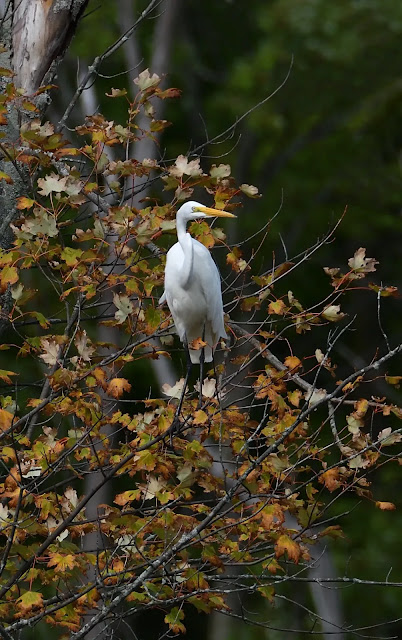Hooded Mergansers
How many hooded mergansers can you fit on a tree stump? It's, I'm sure, a question that has puzzled us all at some point.
The answer is, of course, three. Three hooded mergansers can comfortably fit on a dead tree stump.
The real question is, why on earth are ducks so interested in dead tree stumps?
Hooded mergansers are fish eaters, after all. Their long serrated bill has a sharp hook at the end.
That bill has evolved with the need to grasp hold of fish who would prefer not to be captured.
Mergansers are just as adept at swimming under the water as they are flying through the air.

And it was their repetitive flying that drew my attention to their fascination with trees.
For no apparent reason, the mergansers, male and female, would take off, performing laps around the wetlands.
They would circle round and round.
That presented me with lots of opportunities for photos of the mergansers in flight.
The males, easily identifiable with their contrasting white hood, would patiently wait, close by in the water.
And while the males waited, the females checked out any large cavities they could find in the trees.
It is nesting season, and hooded mergansers nest in the cavities in trees. Like brown-headed cowbirds, they lay eggs in other's nests. Not just any nest though, it has to be another hooded merganser's nest.
And when the chicks hatch, the female calls to them, urging her young to jump to the ground.
That, I do not have any photos of, not yet, but hopefully in the future.
Let's look at a few similar types of ducks that have common characteristics with hooded mergansers.
These photos are not from the Wetlands but were taken almost one year ago at Lakeside Park.
A male goldeneye with that almost self-illuminating bright yellow eye that the male hooded mergansers also own.
And common mergansers have that long serrated hooked bill, almost an exact copy of hooded mergansers.
The hooded mergansers are misinformed if they think they have the fishing at the Wetlands all to themselves, though. One more fish-eater has returned.
And one never left. It survived the winter months hunting in the snow and ice. Perhaps you can guess who from this confusing close-up of the fish-carrying predator.
Copyright © scottswildencounters.blogspot.com 2021 Scott Atkinson All Rights Reserved.
























Comments
Post a Comment